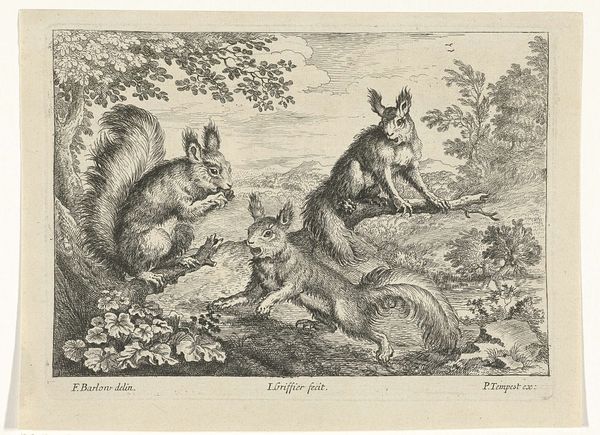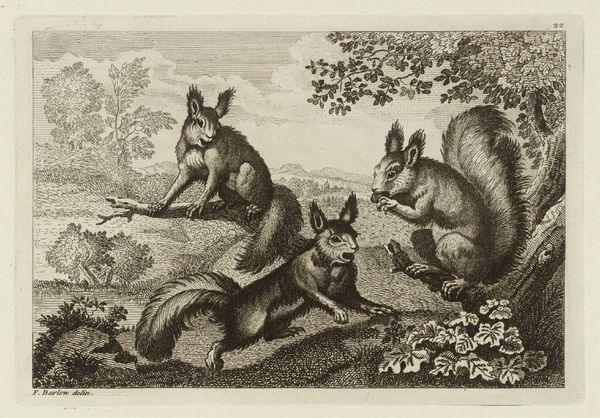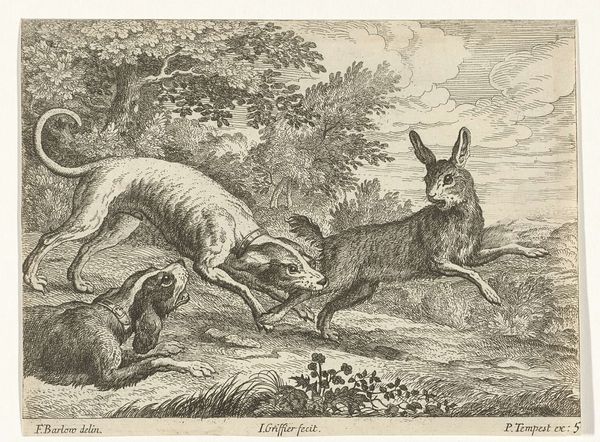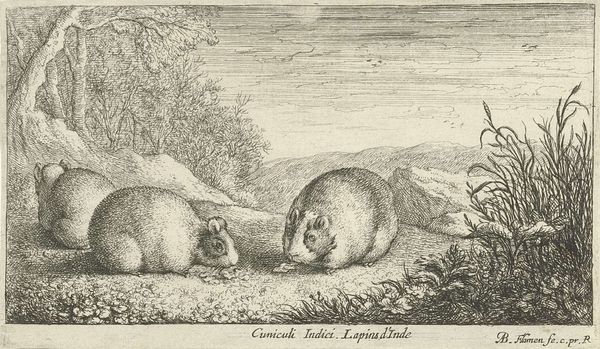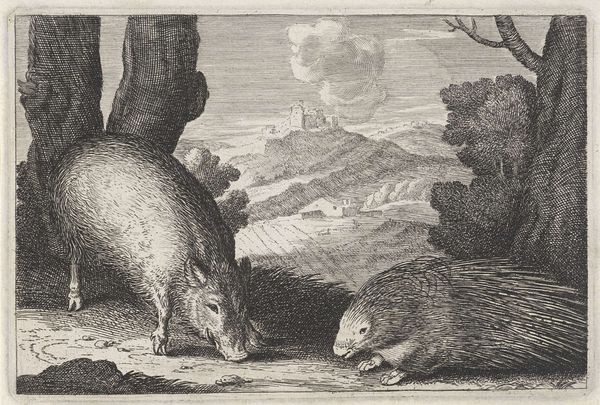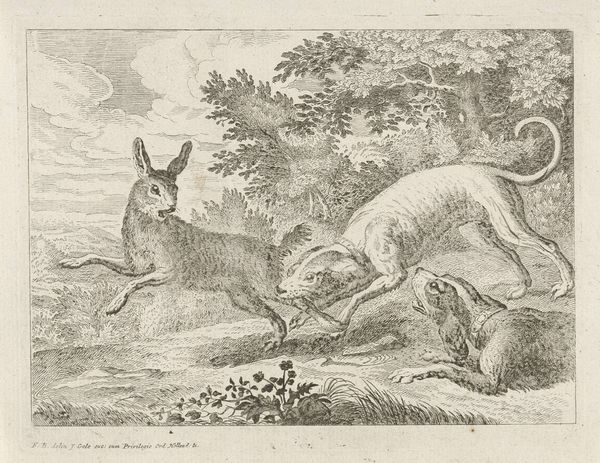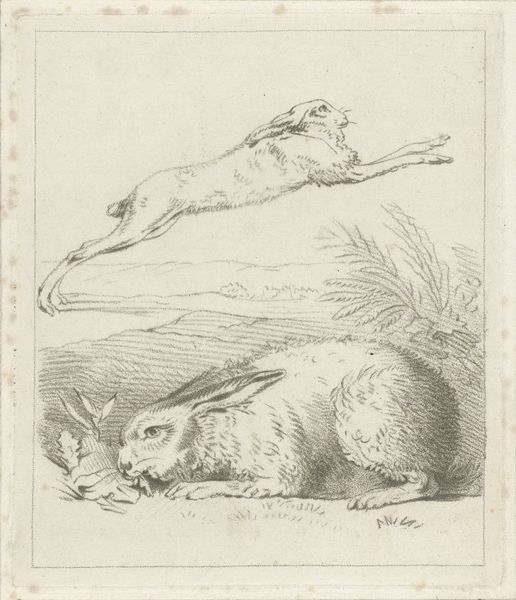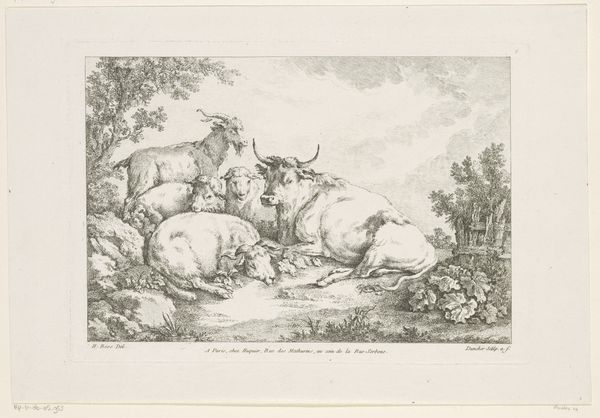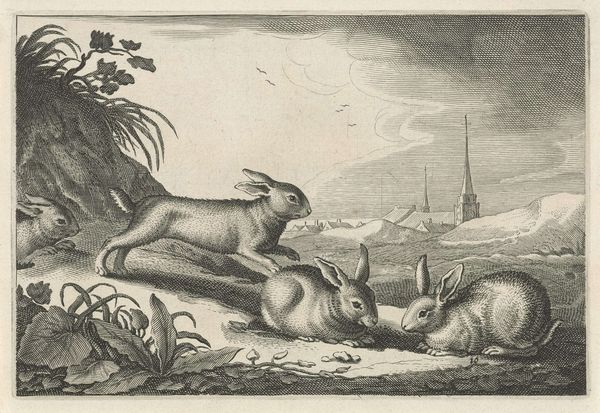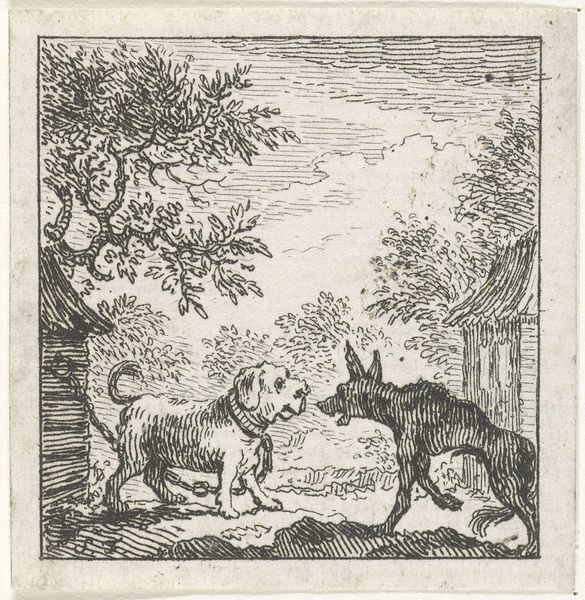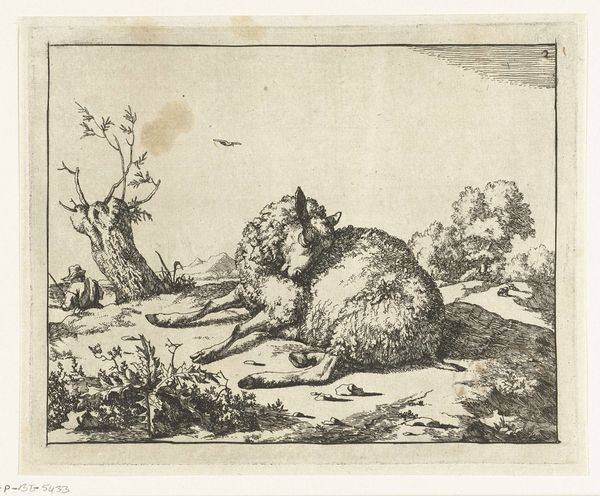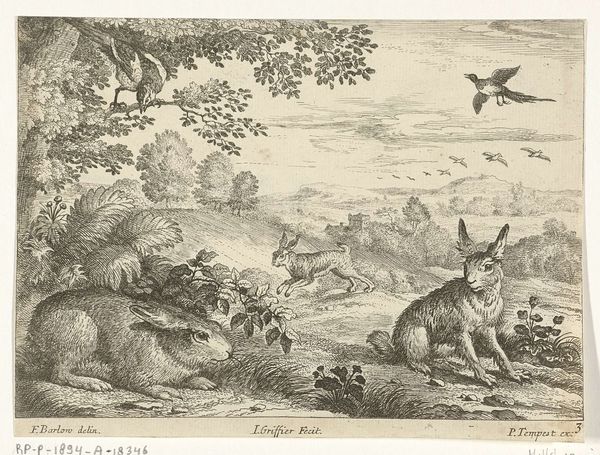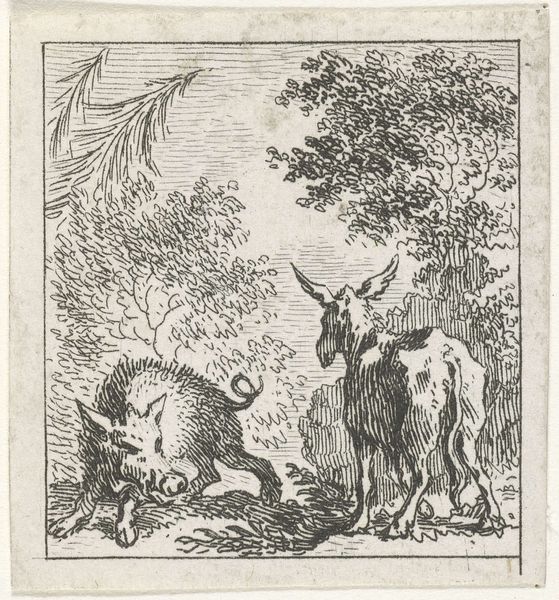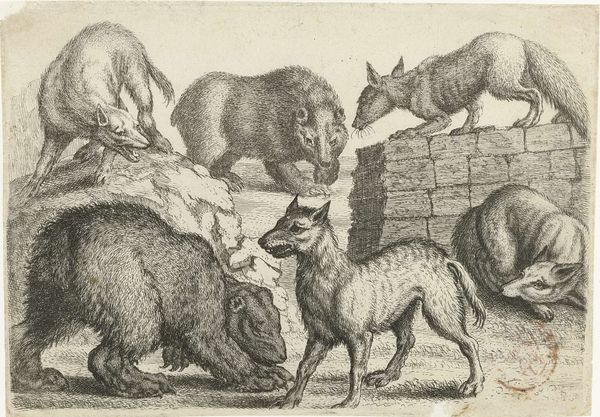
print, engraving
#
baroque
# print
#
pencil sketch
#
landscape
#
sketchbook drawing
#
genre-painting
#
engraving
Dimensions: height 138 mm, width 184 mm
Copyright: Rijks Museum: Open Domain
Editor: We’re looking at "Three Squirrels in a Landscape," an engraving by Jacob Gole, created sometime between 1680 and 1723. It’s whimsical, but the starkness of the engraved lines also gives it a somewhat unsettling quality. What can you tell me about it? Curator: Well, I see an engagement with the natural world heavily mediated by the artist's labor. Gole is not simply depicting squirrels; he's transforming base materials – copper, ink – through skilled craftsmanship into a commodity, an image that can be reproduced and consumed. The print becomes an object within a developing commercial market for art. Editor: So, you’re saying the squirrels are secondary to the means of production? Curator: Precisely. The choice of engraving, a reproductive medium, speaks to the growing accessibility of art during this period. Consider the labour involved – the careful etching, the inking, the pressing. How does this meticulous process relate to, say, the idea of artistic genius often associated with painting? Does it challenge it? Editor: It certainly democratizes it in a way, by enabling mass production. What was the original purpose of such print, I mean who do you think it was intended for? Curator: That’s the crux of it! Who were the consumers? Were these affordable images intended for educational purposes, perhaps illustrating natural history? Or were they purely decorative, adorning the homes of the burgeoning middle class? Understanding the intended market gives us insight into the social function of art at the time. The landscape itself, even simplified, becomes another component produced for consumption. Editor: I hadn’t thought about it that way before – it's fascinating how the materials and production context completely shift the way we understand the image itself. I’m so used to thinking about subject matter that all this information gives a much broader perspective! Curator: Exactly! Considering the means and modes of creation pulls back the curtain, so to speak, and shows us the engine driving artistic expression.
Comments
No comments
Be the first to comment and join the conversation on the ultimate creative platform.
